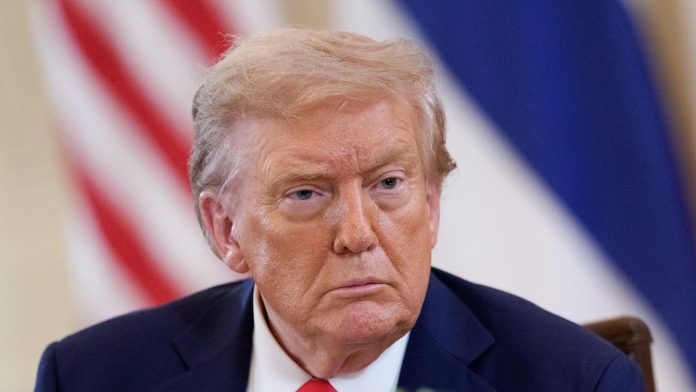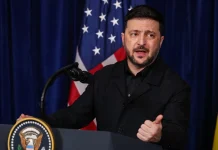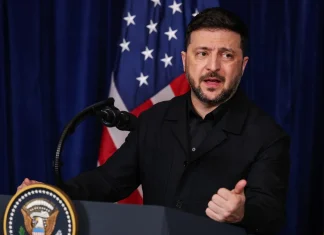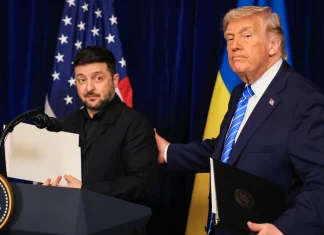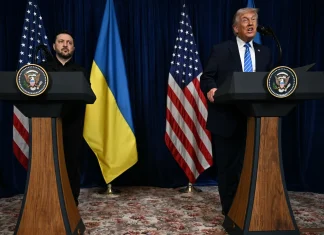A Storm at the Gates: The New US Tariffs Shake India’s Trade Landscape
On a crisp morning in April 2024, the sun rose over the bustling ports and factories of India, but beneath the daily hum of commerce, a fresh chill settled over many exporters.
The United States, one of India’s largest trading partners, had just thrown down the gauntlet, imposing a staggering 50% tariff on a range of Indian goods. This isn’t just another skirmish in the global trade wars—it marks a profound shift in the economic ties between two giants, and sends ripples far beyond the border.
At first glance, the picture is clear: this steep tariff doubles existing duties, a move spearheaded by the administration of President Donald Trump. The strategic aim? To punish India for its energy dealings with Russia, particularly its continued imports of Russian oil—a lifeline Moscow depends on as it wages war in Ukraine. But as always in diplomacy, the surface obscures the undercurrents simmering below.
New Duties, Old Tensions: The US-India Trade Rift Deepens
The 50% duty level stands among the sharpest tariffs the US has imposed on any trade partner, drawing gasps from market watchers and industry leaders alike. “It’s like a sledgehammer rather than a scalpel,” remarked Rakesh Mehta, a Mumbai-based textile exporter, whose family business suddenly finds itself grappling with canceled orders and rising uncertainty.
For India, which exported $87.3 billion worth of goods to the US in 2024, an abrupt tariff hike spells trouble—not only in lost revenue but in the shadows cast over countless small and medium enterprises (SMEs). Textiles, jewellery, and seafood exporters are already reporting cuts in demand, as buyers turn to cheaper rivals in Bangladesh and Vietnam. “My workers are asking if their jobs will survive this,” said Mehta, his voice a mix of worry and resolve.
Remarkably, the tariff list excludes some critical sectors—pharmaceuticals, computer chips, smartphones, and even steel and aluminium remain exempt, though investigations into some of these domains are ongoing.
This cautious approach suggests Washington’s desire to avoid a complete economic rupture. Yet, the message is unmistakable: the US is serious about pressing India on its Russian oil imports, a bold geopolitical gambit in the shadow of the Ukraine conflict.
The Heart of the Matter: Russian Oil and Energy Security
India’s gambit is rooted in pragmatism. Russia accounted for nearly 36% of India’s crude oil imports in 2024, a critical component of its energy security strategy. “The global energy market is turbulent, and sourcing affordable oil is vital to keep our economy stable,” explained Meena Krishnan, an energy analyst based in Delhi. “By buying Russian oil, India saved billions, ensuring fuel prices at home didn’t spiral.”
This economic calculus, however, collided headlong with US foreign policy priorities. Washington views these oil transactions as indirectly funding Russia’s war effort, a stance the Trump administration has been vocal and unyielding about. “India doesn’t appear to want to recognize its role in the bloodshed,” said Peter Navarro, Trump’s trade adviser, last week, underscoring the administration’s hard stance.
The foreign ministry in New Delhi retorted that the US had initially encouraged such trade to stabilize global markets. “These tariffs are unfair, unjustified, and unreasonable,” declared a spokesperson in a sharp response. Here unfolds a complex narrative where economic necessity, geopolitical strategy, and diplomatic frictions intertwine.
Winds of Change: India’s Strategic Response
Facing this tariff tempest, India is charting a course of cautious defiance and resilient adaptation. Prime Minister Narendra Modi, in his recent Independence Day address, promised to lighten the tax burden on citizens and reaffirmed his commitment to “Atmanirbhar Bharat” — a vision of self-reliance that echoes through India’s factories and farms alike. It’s a call not just to overcome adversity, but to seize a new economic destiny.
“India is no stranger to navigating complex trade landscapes,” observes Wendy Cutler, senior vice president at the Asia Society Policy Institute and a former US trade official. “What’s troubling is how quickly the US-India relationship has soured—from a promising partner in trade negotiations to a country facing some of the harshest tariffs imposed by America.”
Cutler warns of eroded trust that may take years to rebuild. “Tariffs are more than just economic barriers; they’re political signals. The high duties now risk turning a strong bilateral partnership into a precarious standoff.”
Looking Beyond: What This Means for Global Trade
India’s predicament is a microcosm of broader shifts shaking the architecture of international commerce. The renewed US enthusiasm for tariffs reflects a deeper unease about trade imbalances, supply chain vulnerabilities, and geopolitical rivalries. While trade deficits have long been a hot button for Washington—impacting deals from the EU to Indonesia—the blunt instrument of tariffs often carries unintended consequences.
Consider the ripple effect. Small exporters strained by these duties may face bankruptcy or layoffs, which impacts local communities and workers reliant on these industries. As orders dry up, entire supply chains— from shrimpers off the coast of Kerala to silk weavers in Gujarat—feel the pressure. It’s a stark reminder that behind every statistic lies a human story.
Meanwhile, India’s drift towards closer ties with China—the very rival the US sees as its main competitor in Asia—adds a geopolitical dimension that transcends economics. “Trade is never just about money. It’s about alliances, influence, and values,” notes Dr. Anjali Rao, a geopolitics professor at the Jawaharlal Nehru University.
Are we witnessing a new era where economic strategies are weaponized to enforce political goals? And how will emerging economies like India navigate these treacherous waters without losing their footing? The answers remain uncertain, but the stakes could not be higher.
Questions to Ponder
- Can India pivot economically to reduce its dependence on Western markets without sacrificing growth?
- Will the US revisit these tariffs as diplomatic dialogue continues, or are we facing a prolonged period of trade hostility?
- How do these developments shape the global balance of power, particularly between democracies and autocracies?
- What role do global consumers play—can public demand for ethically aligned policies influence these trade decisions?
As we watch the story unfold, it’s essential to remember that behind every tariff and trade deal lies a complex web of human ambition, political calculation, and economic survival. For the millions whose livelihoods now hang in the balance, this isn’t just headline news—it’s their reality.
So where do you stand in this global theater? As a citizen, business owner, or observer—how do you interpret this collision of commerce and diplomacy, and what hopes do you hold for a world where trade fosters cooperation instead of conflict?


